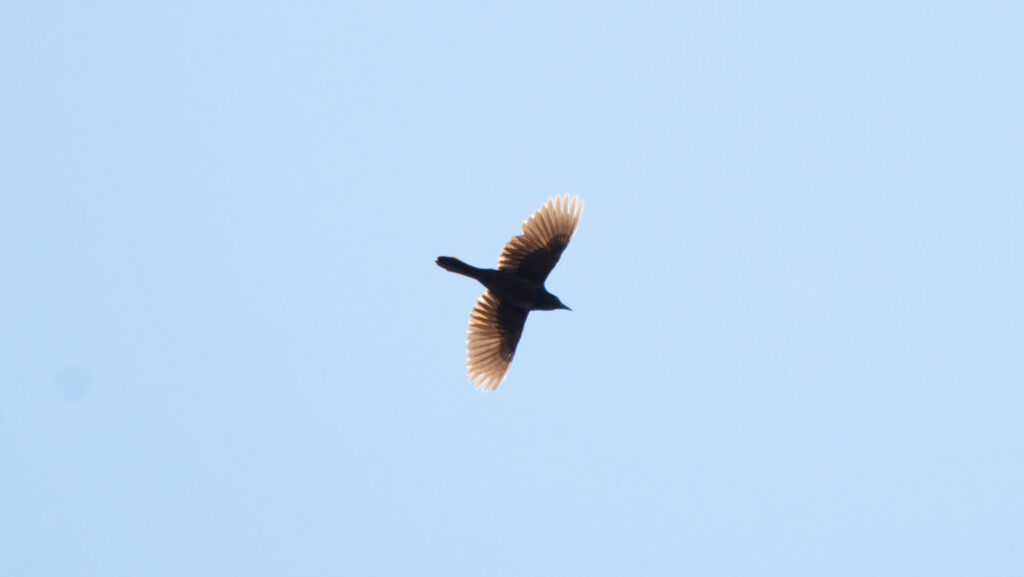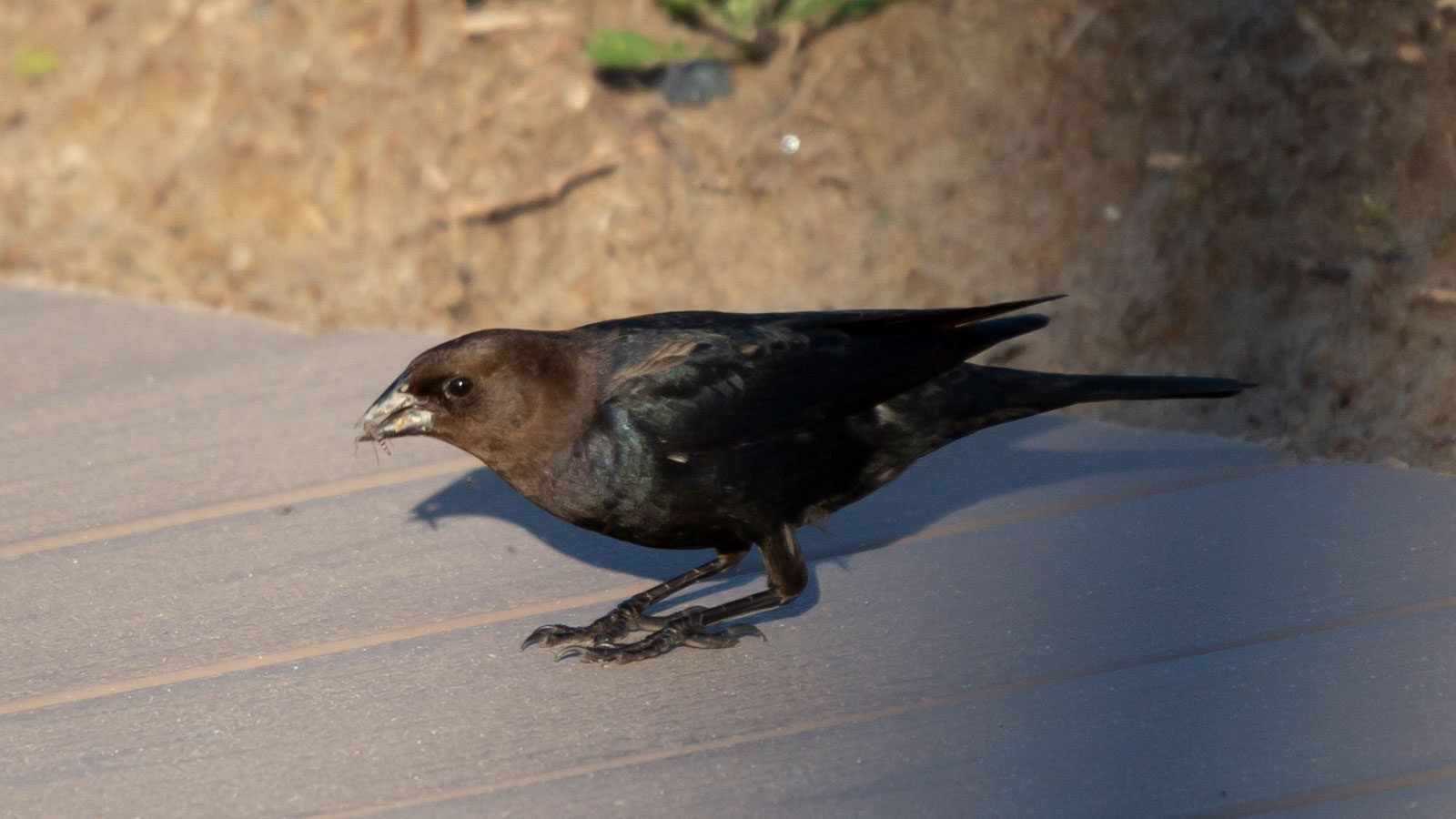
Did you know that common grackles let ants crawl on them because the formic acid they secrete rids common grackles of parasites?
Common Grackles
at
a Glance

Key Features:
Common grackles are black birds with long tails. Males have iridescent blue heads. Females do not have iridescent blue heads.
Near Threatened - Population Decreasing
Habitat:
Fields, forest edges, forest openings, grasslands, marshes, meadows, parks, swamps, and yard
nesting habits:
Common grackles build cup-shaped nests in trees, woodpecker holes, barns, osprey nests, and blue heron nests out of cloth, corn husks, grass, hair, leaves, mud, twigs, paper, and string.
seasons common grackles are active in our area:
All year
Diet:
Seeds, fruit, garbage, beetles, caterpillars, crustaceans, fish, frogs, grasshoppers, mice, mollusks, salamanders, spiders, and other birds
hunting Behavior:
Common grackles forage on the ground.
Commonly Confused With:
Brewer's Blackbirds, Brown-Headed Cowbirds, Great-Tailed Grackles, and Rusty Blackbirds

Common grackles are often confused with male brown-headed cowbirds because both have black bodies. Male common grackles have iridescent blue heads. Female common grackles are solid black. Brown-headed cowbirds have brown heads.

Common grackles are often confused with rusty blackbirds because both are black. Male common grackles have iridescent blue heads. Female common grackles are larger with longer tails and larger beaks.